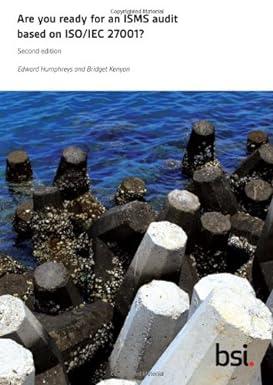Question
1.At the beginning of the year, Harold, Missy, and Ranae formed HMR Corporation as an S corporation. For one-third of the HMR stock, Harold contributed
1.At the beginning of the year, Harold, Missy, and Ranae formed HMR Corporation as an S corporation. For one-third of the HMR stock, Harold contributed $50,000 cash and land with a fair market value of $75,000 and adjusted tax basis of $60,000. The land was subject to a $45,000 mortgage, which was assumed by HMR on the formation. Missy and Ranae each contributed $80,000 cash to HMR for one-third of the HMR stock. What is Harold's basis in the HMR stock after the formation? What is Missy's basis in her HMR stock after the formation?
2.Jackson is the sole owner of JJJ corp. (an S corporation). At the beginning of 2017, Jackson's basis in his JJJ stock was $8,000. For 2017, JJJ reported a ($30,000) ordinary business loss (not a passive loss) and $4,000 of long-term capital gains. Assuming Jackson's tax basis and his at risk amount are the same, what is Jackson's stock basis at the end of the year and how much of the ordinary business loss is he allowed to deduct in 2017?
3. Jackson is the sole owner of JJJ corp. (an S corporation). At the end of 2017, Jackson's basis in his JJJ stock and his at risk amount was $0. Jackson also had a $10,000 suspended ordinary business loss (suspended at the tax basis and at risk level). JJJ's S election was terminated effective the end of the day on December 31, 2017. If Jackson contributes $6,000 cash to JJJ on July 1, 2018 and $3,000 cash on January 5, 2019, how much of his $10,000 suspended loss will he be allowed to deduct and how much disappears unused?
4.Parker is a 100% shareholder of Johnson Corp. (an S corporation). At the beginning of 2017, Parker's basis in his Johnson Corp. stock was $14,000. During 2017, Parker loaned $20,000 to Johnson Corp. and Johnson Corp. reported a $25,000 ordinary business loss and no separately stated items. In 2018, Johnson Corp. reported $8,000 of ordinary business income.
a. How much of the $25,000 ordinary loss allocated to Parker clears the tax basis hurdle for deductibility in 2017?
b. What is Parker's stock and debt basis at the end of 2017?
c. What is Parker's stock and debt basis at the end of 2018?
Step by Step Solution
There are 3 Steps involved in it
Step: 1

Get Instant Access to Expert-Tailored Solutions
See step-by-step solutions with expert insights and AI powered tools for academic success
Step: 2

Step: 3

Ace Your Homework with AI
Get the answers you need in no time with our AI-driven, step-by-step assistance
Get Started


